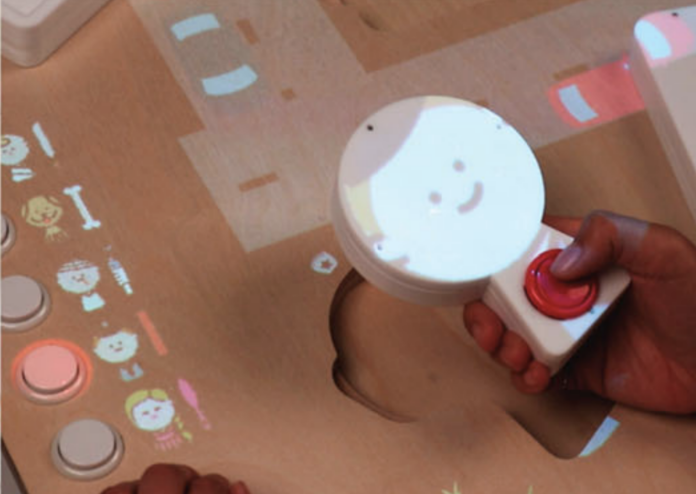This paper takes an interaction design approach to explore how children perceive augmented toys, assign symbolic meaning, and perform pretence socially in technology-mediated playing. We developed a system with three kinds of toys—each with distinct abstract appearances and audiovisual augmentation—based on several design decisions. An observational user study with thirty-two young children aged 3–7 years revealed that children utilized digital augmentation as a facilitator of pretending behaviour with the possibility for subjective interpretation while substituting an object for another. Digital augmentation was not only a social cue for children to respond by gathering together and negotiating socially for mutual pretence—it was also a hindrance by amplifying conflicts in a shared space. Our study empirically clarifies children’s cognition and behaviour in an interactive system for pretend play and provides broader insight for the design of an interface enriching symbolic interpretation and social interaction.
Notes
Reading this article was really interesting to me. I really like the approach it took. It can be considered research through design? I think so. I find the topic of pretend play in childhood really important and interesting, especially regarding its creative and social aspects. I like that they built all the assets to investigate this issue regarding digitally augmented toys and children. They talked a lot about the social aspect of this experiment, but I wonder if it would be possible to measure the creativity potential and aspects of this tool. Is Having their role play facilitated is what children really need?
Some research conclusions
- Children appeared to utilize digital augmentation as a facilitator to practice pretending behaviour in the ways of substituting an object for another, attributing functional features, and recalling imaginary situations. This refers to the capability of digital augmentation, which can influence the mental model to perceive objects in a symbolic manner by superimposing virtual entities on physical entities (Bai, Blackwell, and Coulouris 2015).
- Children could regard the surrounding space as if being in an imaginary situation because digital augmentation was perceived to overlap with the real world.
Jiwoo Hong, Donghyeon Ko & Woohun Lee (2019) Investigating the effect of digitally augmented toys on young children’s social pretend play, Digital Creativity, 30:3, 161-176, DOI: 10.1080/14626268.2019.1653928




